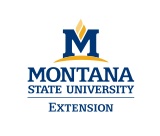
 June 11, 2008 – A new Montana
June 11, 2008 – A new Montana
State University Extension bulletin is available on nutrient management
practices for no-till and minimum till systems.
June 11, 2008 – A new Montana State University Extension bulletin is available on nutrient management practices for no-till and minimum till systems.
 “With increased levels of no-till and minimum till in Montana, it is important for producers and their advisers to understand differences in recommended fertilizer application practices between tillage systems” says Clain Jones, Extension soil fertility specialist in MSU’s Department of Land Resources and Environmental Sciences.
“With increased levels of no-till and minimum till in Montana, it is important for producers and their advisers to understand differences in recommended fertilizer application practices between tillage systems” says Clain Jones, Extension soil fertility specialist in MSU’s Department of Land Resources and Environmental Sciences.
“Research has shown that no-till and minimum till systems affect water infiltration, soil moisture, soil temperature, nutrient accumulation in certain areas of the soil profile, soil aeration and microbial populations and activity,” says Kent McVay, the MSU Extension cropping systems specialist at the Southern Agricultural Research Center. Because these factors all affect soil fertility, “understanding differences among tillage systems should assist in optimizing fertilizer use and crop yields,” he adds.
Both soil nitrogen and fertilizer nitrogen are consumed when stubble residue decomposes, especially when the fertilizer is broadcast on stubble. Also, nitrogen release from organic matter is generally slowed in reduced till systems due to less oxygen in the soil, especially in finer soils.
“To compensate for the reduction of available nitrogen in the soil, more nitrogen fertilizer should be applied for the first few years after conversion to no-till, especially when broadcast on high amounts of stubble,” says Jones.
No-till and minimum till systems often result in a greater concentration of soil nutrients near the surface than conventional tillage systems.
“Accumulation of broadcast and seed-placed phosphorus fertilizer in reduced tillage systems occurs at, or near, the soil surface,” says Jones. “That is why we recommend that producers sub-surface band phosphorus with the seed, or up to two inches below the seed to promote deep root growth and avoid stranding phosphorus near the soil surface, particularly in reduced till systems.”
More details on similarities and differences in recommended fertilizer management practices among tillage systems are described in the new bulletin.
Free copies of the Extension bulletin “Nutrient Management in No-till and Minimum Till Systems” are available on the web. To order printed copies, contact Extension Publications at (406) 994-3273 or orderpubs@montana.edu.